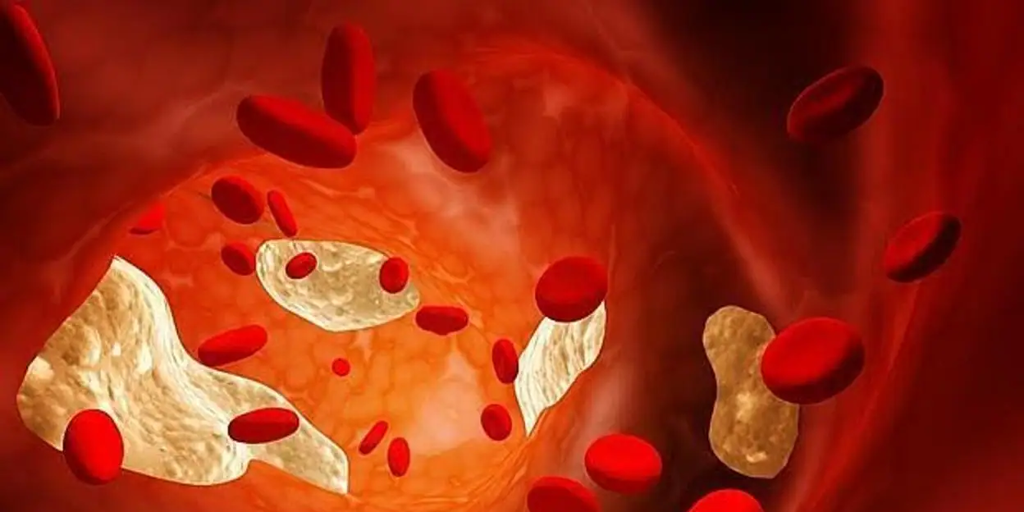Epigenetic therapy silences cholesterol gene in mice for a year

Cholesterol plays an important role in the body. It is not for nothing that it is one of the main components of the membranes of all cells. But when found in large quantities, this cholesterol eventually creates a problem: the excess cholesterol is deposited on the walls of arteries and veins and forms so-called “atheromatous plaques”, which, in addition to preventing adequate blood flow, can rupture and form a blood clot – and therefore,n myocardial infarction or stroke–. So much so that people with high cholesterol are forced to take medications such as statins and PCSK9 protein inhibitors to counteract it.
But there may be a more “direct” solution: Yesgenetically silence the gene responsible for the expression of this PCSK9 protein, which plays a fundamental role in cholesterol metabolism. And working? Well, according to a study carried out by researchers from the IRCCS San Raffaele Scientific Institute in Milan, yes, and very well. At least in animal models – mice.
Researchers led by Angelo Lombardo, using an innovative technique called epigenetic editing, which aims to change gene expression without the need to change the DNA sequence as gene editing techniques do, managed to silence the PCSK9 gene and thereby reduce cholesterol levels by half within as long as at least a year.
The results demonstrate the potential of epigenetic silencing to treat disease. According to the authors, and subject to continued evaluation, their platform “could lay the foundation for the development of this type of therapy.” The results were published in the journal Nature.
In one step, epigenetic silencing therapy ensures that its effects on cholesterol control last for nearly a year in mice.
Changing the expression of genes involved in diseases is a promising therapy for treating a variety of diseases.
Changing the expression of genes involved in diseases is a promising therapy for treating a variety of human diseases. Genome editing approaches have shown some success, but there are concerns that disrupting DNA to make sequence changes could lead to unwanted mutations or unexpected off-target activity. Epigenome editing is an attractive alternative because it modifies the chemical groups that decorate DNA without changing the genetic sequence, but achieving long-term silencing of target genes is difficult.
This study was able to obtain results similar to those obtained with gene editing carried out by the company Verve Therapeutics with CRISPR-based base editors, says Marc Guell from the University of Pompeu Fabra (UPF), Science Media Center reports. “I also find it very interesting on a conceptual level.”
Deprecated changes
Unlike gene-editing techniques, he explains, gene silencing effectively deactivates a gene “without changing a single core of the genome.” Güell will be “interested to see that these changes in gene expression are not only maintained over time, but are also ‘inherited’ after liver regeneration.”
According to Luis Montoliu, a researcher at the National Center for Biotechnology (CNB-CSIC) and CIBERER-ISCIII, the fact that it modifies the genome, but only the functioning of genes, is its great advantage over other similar cholesterol-lowering methods. are being investigated and are also trying to inactivate the PCSK9 gene.
He points out to SMC that one of these other initiatives, which uses base editors (second-generation CRISPR tools) to directly inactivate the PCSK9 gene by modifying DNA and interrupting its normal processing, is already being evaluated in clinical trials in patients with familial hypercholesterolemia. after testing in mice and macaques. However, he said, “some problems have arisen that raise questions about the safety of these treatments: two out of ten patients treated had a heart attack, and one of them died.”
Although the Italian authors note that these results are proof of principle and require further research, they suggest that with further evaluation their platform may lay the groundwork for the development of treatments using epigenetic silencing
Montoliu says this is a preclinical study in animal models that should give way to other studies in macaques and related clinical trials to assess whether the therapeutic success achieved so far in mice can be replicated, first in primates and then in patients. in the future with the necessary safety and effectiveness.
Güell adds that “this is a completely new form of advanced therapy,” but “as always in such cases, careful monitoring of all treatments is necessary.” toxicity and effectiveness in the long term, but the study gives a very good feeling.